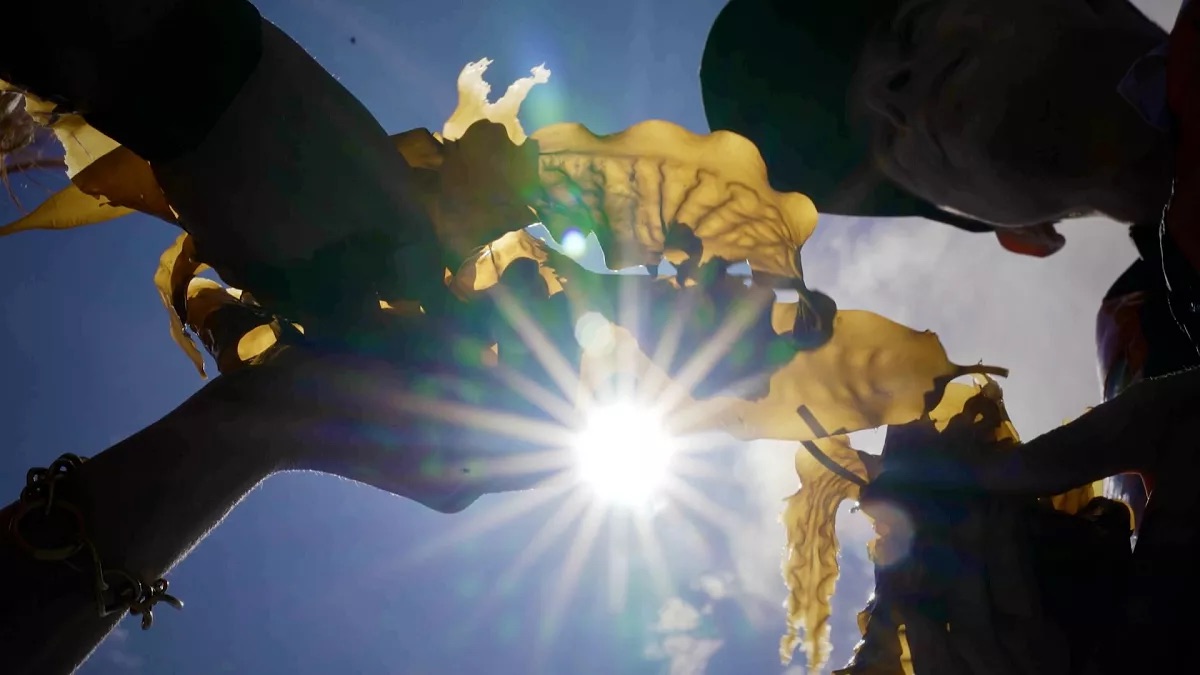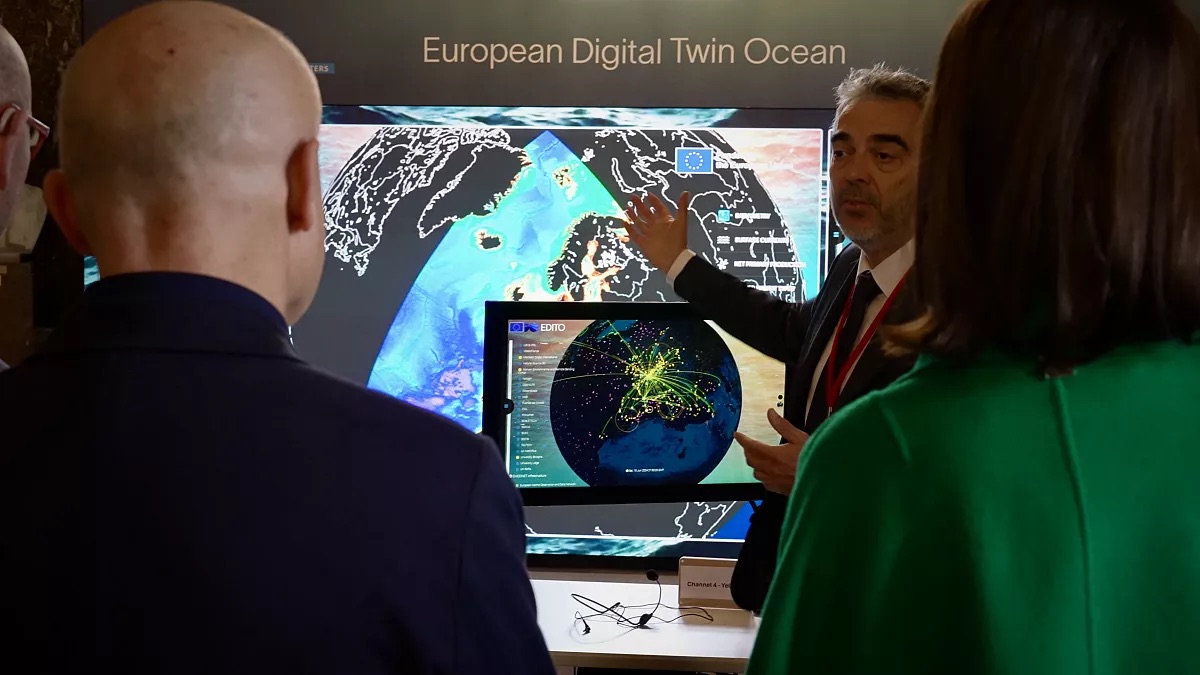Everything we see around is waves – regular vibrations of electromagnetic radiation, called visible light. But to have a look at some of the most interesting waves in the Universe, we have to leave the Earth.
European industry is finalizing the construction of two space telescopes, designed to
discern the parts of the spectrum invisible to human eye.
The Herschel Space Observatory will be the largest telescope ever flown in space: its main mirror is 3.5 meters across – almost one and a half times larger than the Hubble. The impressive size will allow Hershel to produce unprecedentedly detailed images.
European Space Agency developped Advanced instruments aboard the telescope to focus on the far infrared light coming from the stars – something no other observatory was able to see before.
Göran Pilbratt, ESA Herschel Project Scientist: “Herschel is a far infrared observatory, and it will enable us to learn many more about how stars and planets and galaxies formed than we know today.”
Another telescope – Planck – will accompany Herschel with different mission: it will be seeing something even further away from the visible spectrum than infrared rays – and much, much older! The goal of Planck is to take a picture of the young Universe – as it was about 14 billions years ago.
It is still possible, because the light that has first been released after the Big Bang still exists everywhere in the Universe – now in the form of microwaves, which can be collected and measured by Planck’s sensitive instruments.
Jan Tauber, ESA Planck Project Scientist: “Its objective is to make a picture of the whole sky, and this picture will be in a very special light which is called Cosmic Microwave Background. And this light comes to us from the very first moments when the Universe was born. And therefore it tells us a lot about the structure of our Universe today. Planck is not the first cosmic microwave background experiment, but it is the Rolls-Royce of cosmic microwave background experiments. It is the most sophisticated and the most ambitious of these experiments”.
Herschel and Planck will be set in space by an Ariane 5 rocket from Kourou, Europe’s spaceport in French Guiana. The launch is scheduled by spring 2009.
As the programme manager explains, the dual launch of both telescopes by the same rocket will be much less expensive than sending them to space one by one.
Thomas Passvogel, ESA Herschel and Planck Programme Manager: “I think Herschel and Planck will be just launched together out of economic reasons. They flight to the exactly same place – not exactly the same place, but to similar orbit around a Lagrangian point behind the Earth, so they go far behind the Earth – about 1.5 million kilometers away from the Earth, but they surround the same point. So it just made sense to fly them together.”
An Ariane 5 launcher will thrust Hershel and Planck up in the space, where they will separate 2,5 hours after leaving the Earth.
Jan Tauber: “This is a model of how they will be placed on top of the rocket. As you can see, they’re essentially stacked one on top of the other. And when they’re launched, the faring – that the part of the rocked that is around it will drop off, and then the first satellite – Herschel – will go its own way, and then Planck finally will separate from the rocket.”
Their destination is the L2 – the second Lagrangian point, situated opposite to the Sun about four-five times farther from us than the Moon.
It’s an excellent place to see the sky: telescopes there will be sheltered from the heat of Earth’s illuminated side and will avoid being pulled away by gravitation.
Thomas Passvogel: “The Lagrangian point is one of these point in Space where gravitation forces and centrifugal forces compensate each other.”
Herschel, the far-infrared observatory with the large mirror, will follow commands from the Earth, focusing very precisely on any object both within and outside our galaxy – as distant as 10 000 million light years away.
In the far-infrared diapason of the electromagnetic spectrum Herschel will be able to see through the clouds of gas and dust surrounding the newly-forming stars and planets. This will be something that optical telescopes could never do: seeing what exactly happens before a star get born.
Göran Pilbratt: “When stars start to form in this clouds, initially they implode and they get a little warmer, and finally a nuclear reaction will start and you will have a real star – but all this happens inside the cloud, you cannot see that from the outside, because the light – the heat which is emitted by the formed star – cannot get out. With the long infrared wavelenghs we can see this heat through the cloud – we can see inside the cloud, if you like.”
The visible light is collected by optical telescopes like Hubble, the infrared is seen by Herschel. Next comes the microwave radiation with its even longer wavelenghs.
On that frequency the Planck observatory will see the first light released after the Big Bang – a ghost image of the young Universe, important to understand its origin, evolution and maybe future.
Jan Tauber: “It is a light which was emitted by the plasma which existed about 3 hundred thousand years after the Universe was born, after what people call the Big Bang, and this light comes to us essentially unimpeded.”
The tiny variations that can be detected in the microwave background radiation are the first “seeds” of the galactic structures that we observe in our Universe today.
Unlike Herschel, Planck will not be pointing itself to specific objects: instead it will rotate continuously, scanning all the space around to make a full sky map in the microwave diapason.
Jan Tauber: “The whole telescope itself is rotating slowly around its axis – so it goes like that – and as it rotates, basically it sweeps around the sky and it collects light from a big circle around the sky. And as time goes by, the satellite essentially moves in an orbit around the sun, and so this big circle that it sweeps across the sky is also sweeping itself across the sky. So after about 6 months it will have covered the whole sky, and then we can make a picture.”
Final preparations are underway for Herschel and Planck to get transported from European space centers to French Guiana, where they’ll start their journey catching the waves of invisible light 1.5 million kilometers away from our planet.





